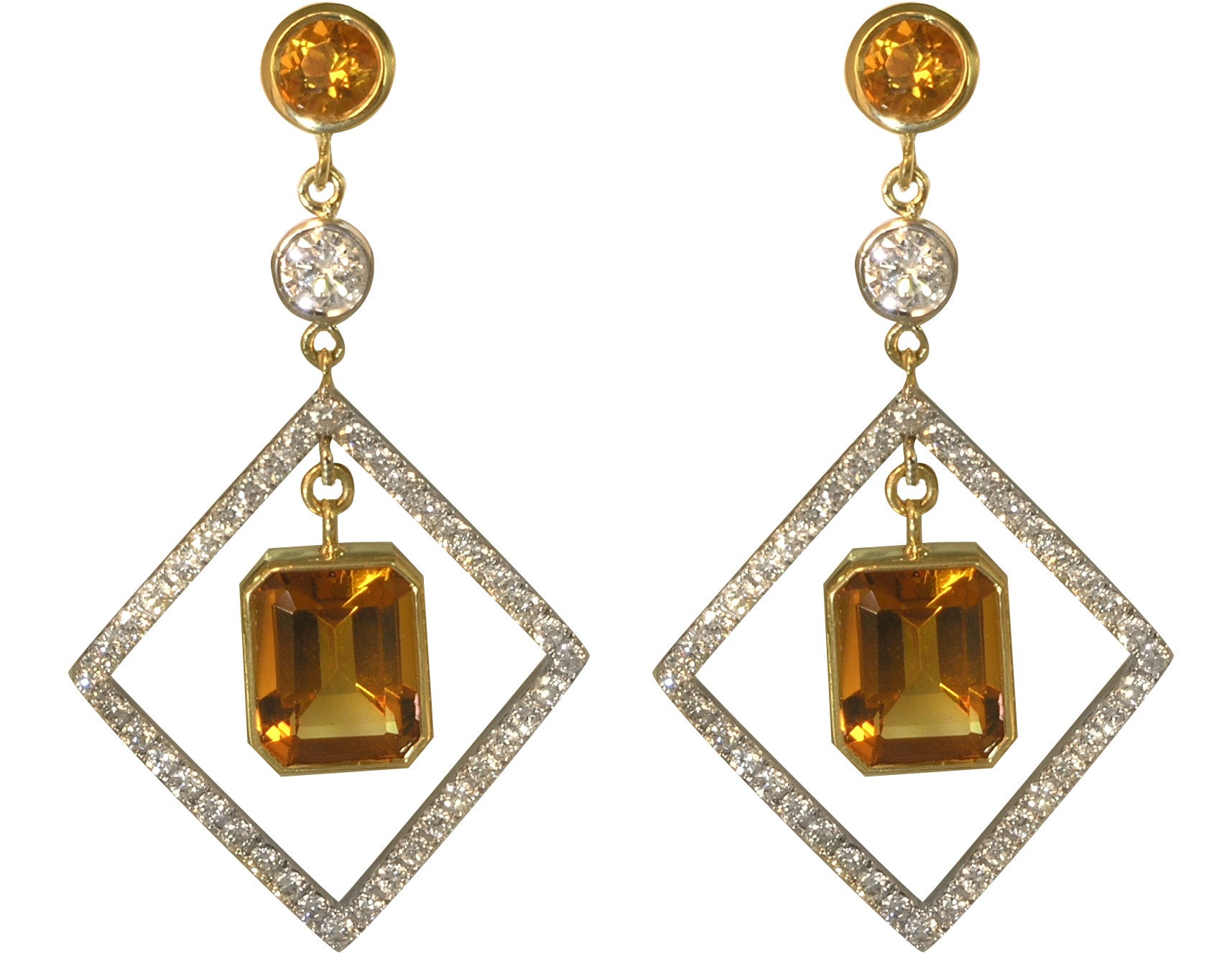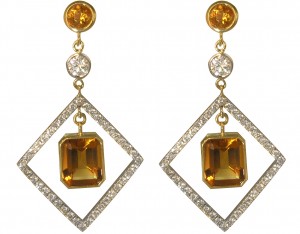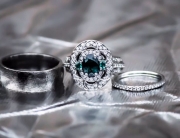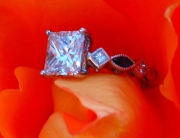Origin of Citrines and Topaz
Topaz and citrine are the birthstones of November, and were originally found in ancient times on Topazios, an island in the Mediterranean. Both gemstones are similar in color, causing some confusion in their identities. They are not alike in size or form, however—topaz are usually brown, yellow, yellow-gold and orange, whereas natural citrines are a lighter shade of golden or pale yellow. A distinguishing difference between these two gemstones is the fluorine aluminium silicate in topaz, which makes it considerably harder and heavier than quartz. This also gives topaz a higher refractive index, creating more brilliance and fire in topaz gemstones with good color.
Meaning and Symbolism of Topaz
Topaz, the traditional November birthstone, is the zodiacal stone for Sagittarius. The gemstone is thought to have healing properties that strengthen breathing, prevent colds, increase energy, aid in tissue regeneration and prevent the wearer from sudden death. It is also thought that topaz dispels sadness, anger and nocturnal fears while increasing understanding, relaxation and creativity,
The name topaz is thought to have derived from Sanskrit, or the Greek name ‘topazos’—meaning green gemstone. The Romans dedicated the topaz to Jupiter. The gemstone was used to promote wisdom in its wearer, and in medieval times topaz rings were often given to heads of state, diplomats and royalty. Historic topaz specimens include the gemstone set in Dresden’s Grünes Gewölbe (Green Vault). Another magnificent topaz, thought for many years to be a diamond, is set in the Portuguese crown.
Color and Qualities of Topaz
Topaz is a gemstone available in a rich variety of colors—the most common color being yellow. Topaz also comes in pink, purple, orange, light green and many tones of blue. Orange, reds and pinks are the rarest topaz colors. Imperial topaz, named after the Russian Czars of the 1800s, features the most prized topaz color of a rich orange body color with pinkish undertones. The Imperial topaz is the gemstone for 23rd wedding anniversaries.
Blue topaz is available in light to deep blues, with the more saturated color considered more beautiful, of greater value and thus higher the price. The blue topaz is the fourth anniversary gemstone. With its current popularity, most blue topaz has been created by irradiating and heat treating colorless topaz to create the blue color. These gemstones have retained their blue color and the color is stable under normal care conditions.
Care of Topaz
Topaz gemstones require special care to avoid breaking or chipping. To prevent damage, purchase jewelry with mountings that protect the topaz, so that it’s less likely to break if it is handled roughly. For daily wear earrings, pins, bangle bracelets and pendants are safer than rings or flexible bracelets. Clean your topaz jewelry with warm, soapy water.
Color and Symbolism of Citrine
Citrine, the stone for the month of November, is named after its color—the yellow of lemon. The finest citrines are a pure yellow color, unlike the golden topaz, which has darker hues of orange or brown. The citrine has been used as a symbol of hope, cheerfulness, health, youth and fidelity. The gemstone is an alternate Zodiac stone for Scorpio and a gemstone gift for the 13th and 17th wedding anniversaries.
Properties of Citrines
The citrine, a fine jewelry stone, has no cleavage and a hardness of 7 on the Mohs scale, making it more resistant to scratches and breakage. The gemstone’s availability in large sizes enables stone cutters to create artistic and intricate custom cuts. Today, most citrines are mined in Brazil.
Natural citrine gemstones are somewhat rare. This has led to a large number of citrines being produced artificially by exposing amethysts to heat which then transforms them into citrines. The artificially produced citrines may have a greater orange or reddish cast than those found in nature.







